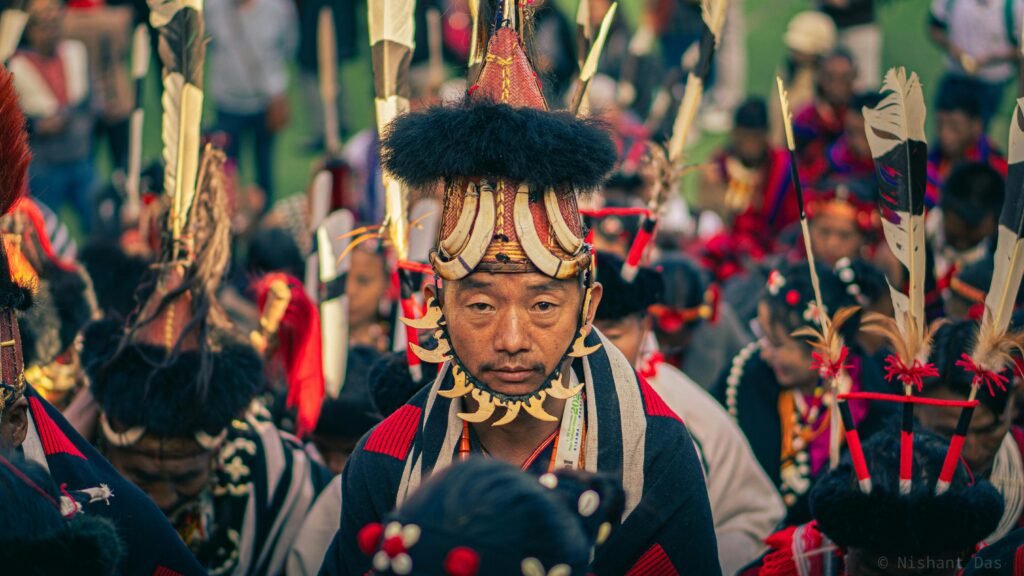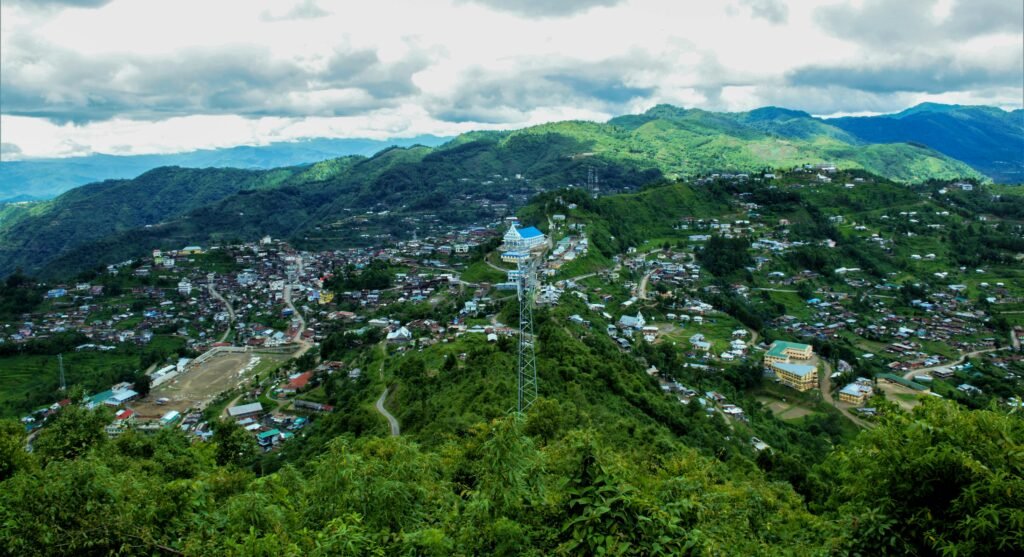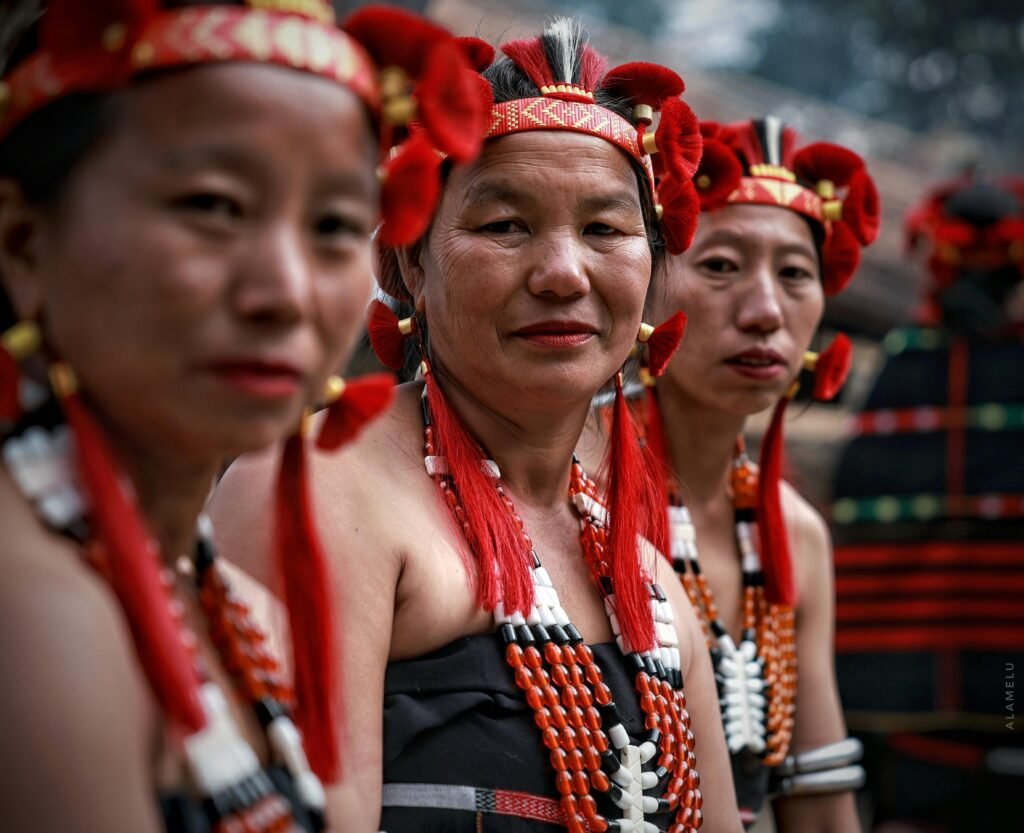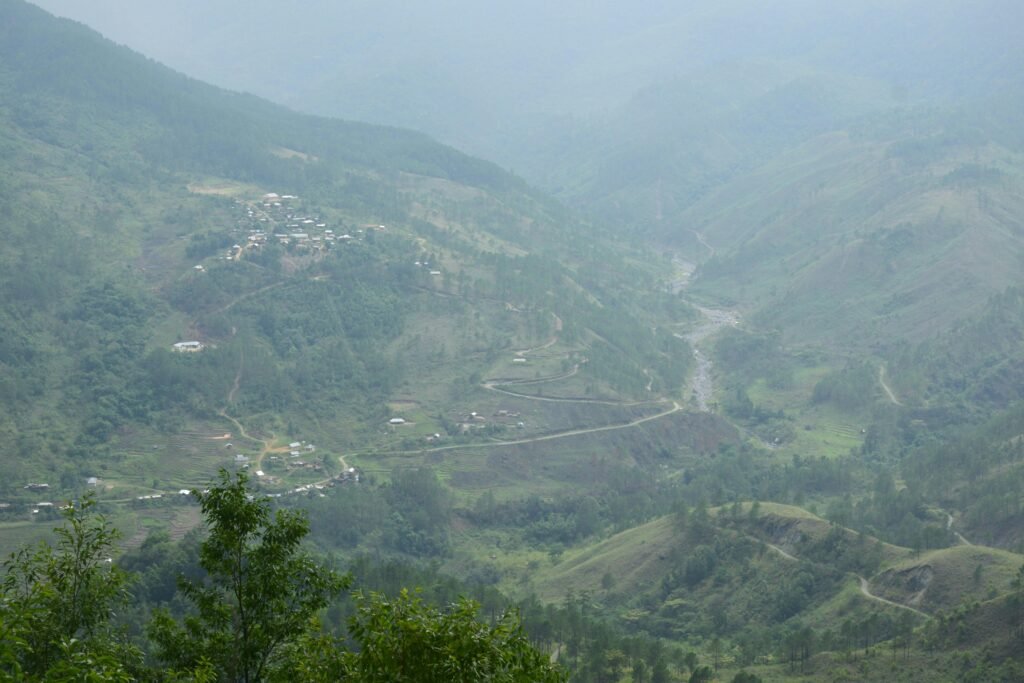The northeastern corner of India, bordering Myanmar, lies Nagaland, a land of Warriors and Hidden Treasures. Often referred to as the “Land of Festivals,” its history is engraved with tales of fierce independence and its present resonates with the rich traditions of its diverse tribes. To understand Nagaland is to immerse into its unique origin, appreciate its multifaceted culture, Savor its distinct cuisine, and marvel at its captivating landscape.

The origin
The origins of the Naga people are shrouded in the mists of time. While definitive historical records are scarce, linguistic and anthropological studies suggest that the various Naga tribes are of Indo-Mongoloid stock, with migrations occurring over centuries from Southeast Asia, possibly through Myanmar. These early settlers established themselves in the rugged, hilly terrain, developing independent village states, each governed by its own customs and traditions. The lack of a unified political entity in pre-colonial times fostered the development of distinct tribal identities, languages, and practices. Oral traditions, folklore, and intricate craftsmanship served as the primary means of preserving and transmitting their history and cultural knowledge across generations.
The recorded history of Nagaland took a significant turn with the arrival of the British in the 19th century. Initial contact was marked by suspicion and conflict, largely due to the Naga tribes’ fiercely independent nature and the practice of headhunting, a complex ritual deeply intertwined with their warrior culture and social structures. The British gradually established their administrative control, leading to significant social and cultural changes. Christian missionaries played a pivotal role in introducing Western education and Christianity, which profoundly impacted Naga society, leading to the decline of some traditional practices while simultaneously opening new avenues for social mobility and modernization.
The 20th century witnessed the rise of Naga nationalism, fuelled by a desire for self-determination and the preservation of their unique identity. After India’s independence in 1947, the Naga Hills became part of Assam. However, the aspirations for a separate statehood continued, culminating in years of political struggle and armed conflict. Finally, in 1963, Nagaland became the 16th state of the Indian Union, a landmark achievement in the Naga people’s quest for recognition and autonomy. Despite the challenges and complexities of its political history, the spirit of resilience and the strong sense of tribal identity have remained defining characteristics of Nagaland.
Tribes
The cultural heritage of Nagaland is as diverse and vibrant as its landscape. Each of the sevenreen major tribes – Angami, AO, Chakhesang, Chang, Khiamniungan, Konyak, kuki, Lotha, Mao, Maram, Phom, Pochury, Rengma, Sangtam, Sumi, Yimkhiung, and Zeliang – boasts its own distinct language, customs, social structures, traditional attire, art forms, and festivals. These tribal identities are deeply ingrained in the social fabric, shaping individual and community life.

Tradition
Traditional Naga society is characterized by strong kinship ties, village solidarity, and respect for elders and established customs. The “morung,” or traditional boys’ dormitory, played a crucial role in educating the youth about their cultural heritage, social responsibilities, and traditional skills. While the influence of Christianity and modern education has brought about changes, many traditional norms and values continue to be cherished and practiced.
The artistic expressions of the Naga people are rich and varied. Weaving is an integral part of their culture, with women creating intricate and colourful shawls, each design and motif carrying symbolic meanings specific to a particular tribe or even a clan. Wood carving is another significant art form, evident in the elaborate decorations of village gates, morungs, and household objects. Pottery, basketry, and beadwork also showcase the craftsmanship and aesthetic sensibilities of the Naga people. Traditional ornaments, often made of beads, shells, and animal bones, are not merely decorative but also signify social status, achievements, and cultural identity.
cuisine
The cuisine of Nagaland is as unique and diverse as its tribes. It is characterized by the use of indigenous ingredients, including various types of meat (especially pork), fish, fermented bamboo shoots (a staple), local herbs, and the fiery “raja mircha” or ghost chili. Traditional cooking methods often involve smoking, fermenting, and boiling, which impart distinct Flavors to the dishes. Some popular Naga delicacies include smoked pork with bamboo shoots, fish cooked in bamboo tubes, and various preparations of fermented soybeans (“akhuni”). Rice is the staple grain, and local brews made from rice or millet are an integral part of social gatherings and festivities.
Transformation
Nagaland has witnessed significant transformations in recent decades. The spread of education, urbanization, and increased interaction with the outside world have brought about changes in lifestyles, occupations, and social values. While these changes have opened up new opportunities, they have also posed challenges to the preservation of traditional practices and indigenous knowledge. Efforts are being made by various organizations and the government to promote and preserve Nagaland’s rich cultural heritage through documentation, cultural centers, and the celebration of festivals.

Festivals
Festivals are the souls of Nagaland, reflecting the agricultural cycles, social events, and religious beliefs of the different tribes. Each tribe celebrates its own unique set of festivals with vibrant traditional attire, energetic folk dances, melodious songs, indigenous games, and elaborate feasts. These festivals serve as crucial platforms for community bonding, the transmission of cultural knowledge to younger generations, and the showcasing of tribal identity.
The most prominent of these is the Hornbill Festival, an annual ten-day extravaganza held in December. Organized by the State Government, this “Festival of Festivals” brings together all the major tribes of Nagaland at Kisama Heritage Village near Kohima. It offers a spectacular glimpse into the diverse cultures of Nagaland, featuring traditional dances, music performances, indigenous sports, handicraft exhibitions, a food festival, and various cultural competitions.
The Hornbill Festival has not only become a major tourist attraction but also plays a vital role in preserving and promoting Nagaland’s cultural heritage on a global platform.
Beyond the grand scale of the Hornbill Festival, each tribe celebrates its own significant agricultural and social festivals throughout the year. For instance, the Angami tribe celebrates Sekrenyi, a ten-day purification festival, while the Ao tribe observes Moatsu Mong, a post-sowing festival marked by feasting and traditional rituals. The Lotha tribe celebrates Tokhu Emong, a harvest festival, and the Konyak tribe observes Aoleang Monyu, a spring festival associated with the sowing season. These festivals are deeply rooted in the agricultural calendar and the social life of the communities, reflecting their close relationship with nature and their traditional way of life.

landscape
The landscape of Nagaland is an integral part of its identity. Characterized by rolling hills, verdant valleys, dense forests, and meandering rivers, the natural beauty of the state is captivating. The terrain has historically influenced the settlement patterns and lifestyles of the Naga tribes, fostering a deep connection between the people and their environment. Traditional practices often incorporate a profound respect for nature, with many rituals and beliefs tied to the forests, mountains, and water sources. The biodiversity of Nagaland is also significant, making it a treasure trove of flora and fauna.
Nagaland is a land where ancient traditions and modern aspirations intertwine. Its origins lie in the migrations of diverse tribes who carved out their identities in the challenging yet beautiful terrain. Its history is marked by periods of isolation, conflict, and a determined struggle for self-determination. Its culture is a vibrant variety of distinct tribal customs, art forms, and social structures. Its cuisine offers a unique culinary experience rooted in indigenous ingredients and traditional methods. While transformation is inevitable in a changing world, the people of Nagaland are striving to preserve their rich festival heritage, cultural norms, and deep connection to their landscape. By understanding and appreciating this multifaceted identity, we gain a deeper insight into the unique tapestry that is Nagaland – a land of warriors, artists, and a people deeply proud of their heritage.
